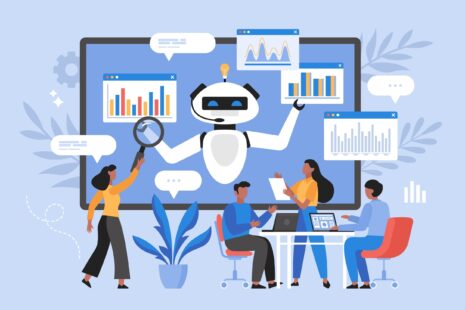The development of artificial intelligence (AI) can be traced back to a few visionary thinkers, but the first person to truly conceptualize AI as we understand it today was Alan Turing. His groundbreaking work in the 1940s and 1950s laid the theoretical groundwork for what would later become the field of AI.
Alan Turing and the Birth of AI
In 1950, Turing published the paper “Computing Machinery and Intelligence” in which he asked, “Can machines think?” Turing was the first to propose the idea that machines could perform tasks that required human intelligence, laying the foundation for the notion of AI. His development of the Turing Test—a method for determining if a machine can exhibit intelligent behavior indistinguishable from that of a human—became a central concept in the philosophy of AI and computer science. Turing’s work didn’t create AI directly but established the theoretical basis that machines could, in principle, replicate human intelligence.
Early Practical AI – John McCarthy and the Dartmouth Conference
While Turing’s work paved the way, the actual formal establishment of AI as a field occurred in 1956, thanks to John McCarthy, often referred to as the “father of AI.” McCarthy, along with fellow researchers Marvin Minsky, Nathaniel Rochester, and Claude Shannon, organized the Dartmouth Conference in 1956, which is considered the official birth of AI as a research discipline. McCarthy also coined the term artificial intelligence at this conference. The Dartmouth Conference aimed to explore the idea that “every aspect of learning or any other feature of intelligence can in principle be so precisely described that a machine can be made to simulate it.”
The First AI Programs – Allen Newell and Herbert A. Simon
While Turing and McCarthy were instrumental in defining AI conceptually, the first practical applications of AI came from Allen Newell and Herbert A. Simon. In 1955, they developed the Logic Theorist, a program designed to solve mathematical theorems. Often regarded as the first AI program, the Logic Theorist was able to prove theorems from Principia Mathematica—a foundational work in mathematics—by mimicking human problem-solving techniques. This work marked one of the earliest demonstrations that computers could perform tasks that traditionally required human intelligence.
The Evolution of AI After Turing, McCarthy, and Simon
The progress of AI research didn’t stop with these early pioneers. In the 1960s and 1970s, AI research expanded to include areas such as natural language processing, expert systems, and neural networks. Marvin Minsky, another prominent figure in AI, contributed significantly to these fields and co-authored the influential book “Perceptrons” in 1969, which explored the limitations and potential of early neural networks.
Over time, AI research and development became more specialized and diverse, with applications spanning from robotics to machine learning. Today, AI encompasses various techniques such as deep learning, reinforcement learning, and computer vision, which continue to evolve and shape industries worldwide.
While Alan Turing set the theoretical groundwork for AI, it was John McCarthy and the Dartmouth Conference that officially marked the beginning of AI as a distinct field of study. Allen Newell and Herbert A. Simon demonstrated its first practical applications. Together, these pioneers contributed to the foundation of AI, which has since become a transformative technology impacting nearly every aspect of society.




